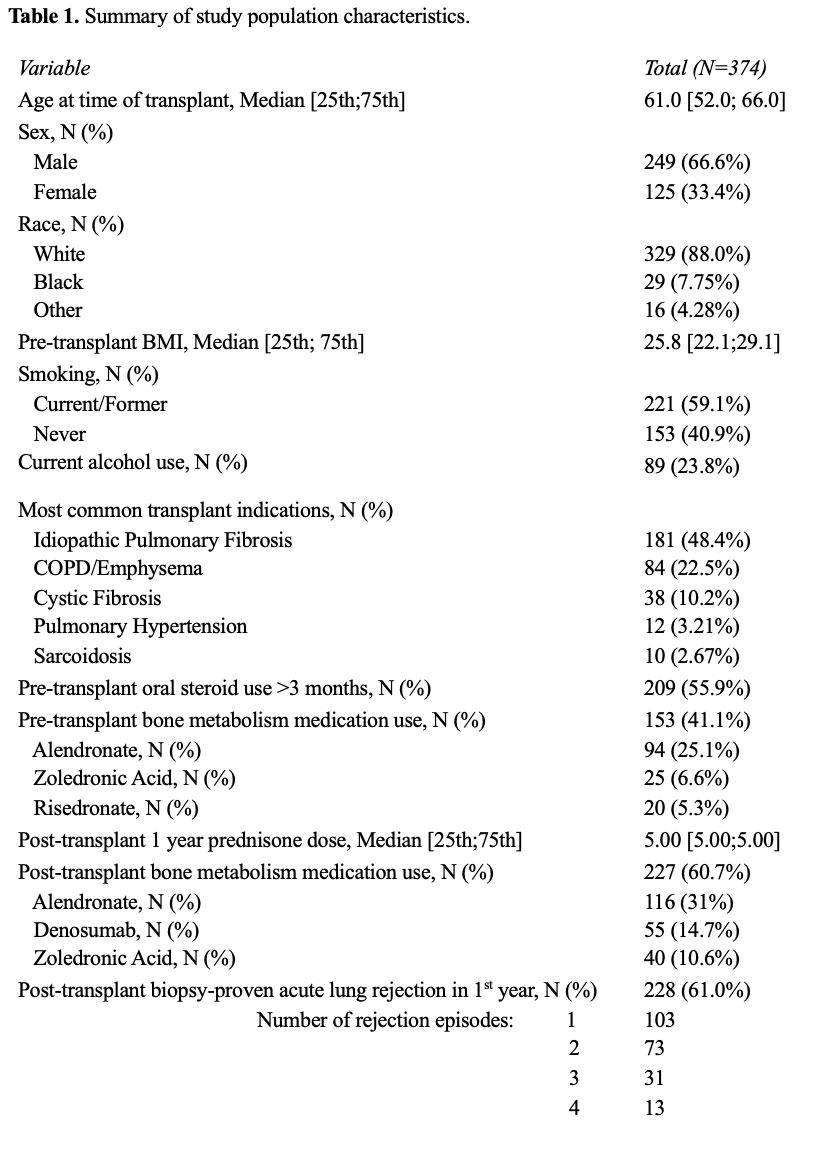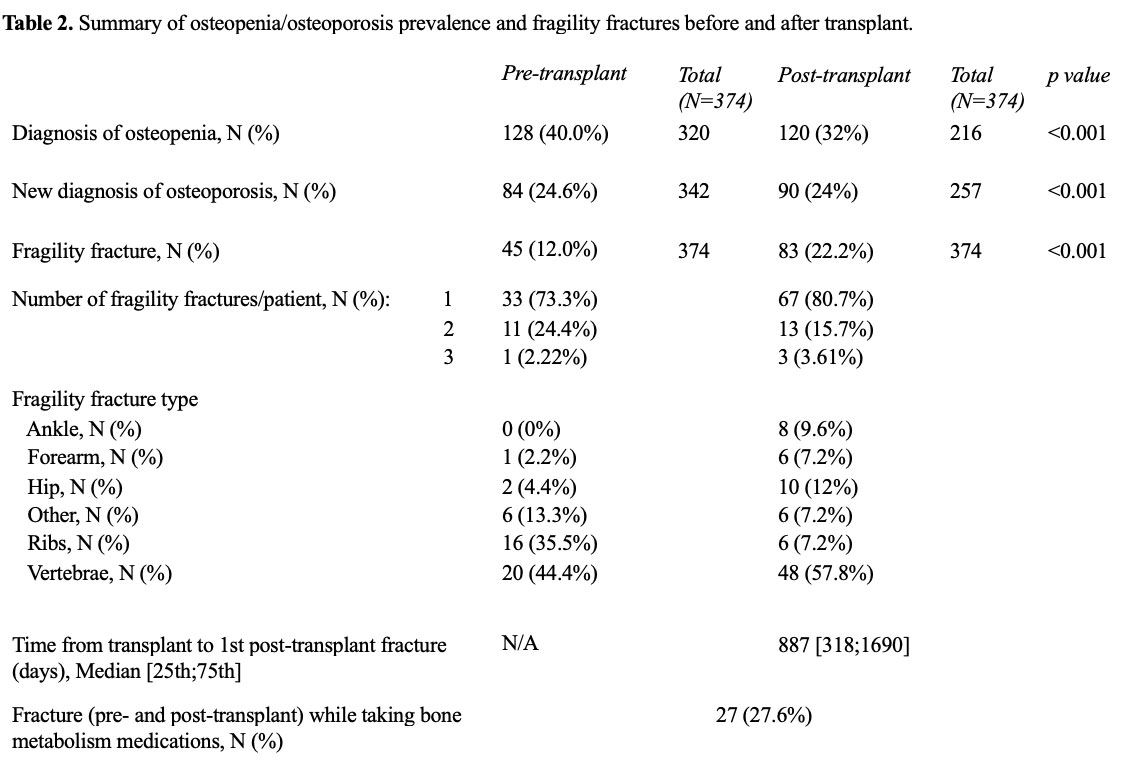Session Information
Date: Sunday, November 13, 2022
Title: Osteoporosis and Metabolic Bone Disease – Basic and Clinical Science Poster
Session Type: Poster Session C
Session Time: 1:00PM-3:00PM
Background/Purpose: Osteoporotic fractures are a well-known complication of lung transplant (LT) and can significantly impact the quality of life of LT recipients. Although much is known about the risk factors associated with osteoporosis and fragility fractures in the general population, there is a lack of data specifically addressing risk factors for osteoporotic fracture in the LT population. Furthermore, there are no universal guidelines that can direct management of osteoporosis and bone density loss in the LT population. The aim of this study was to determine the incidence of osteoporotic fractures among patients with end-stage lung disease prior to and following LT and to identify the potential factors that increase the risk of fractures after LT.
Methods: This retrospective, cohort study was conducted at a large, international transplant center and included all patients over age 18 who underwent either single or double LT from January 1, 2010-December 31, 2013. We conducted an extensive chart review using electronic medical records data. We excluded patients who expired within the first year following LT as well as patients who had undergone prior LT. Study endpoints included: incidence of vertebral and non-vertebral fractures after LT and potential risk factors for post-LT fractures as identified by clinicians. A secondary endpoint included the effect of osteoporosis medications on fracture incidence post-LT. We used logistic regression modeling to understand the relationships between potential risk factors and post-LT fracture.
Results: A total of 432 adults underwent LT between January 1, 2010 and December 2013; 374 patients remained in the cohort after the exclusion criteria were applied (median age, 61; 67% male, 88% white). The two most common indications for LT were idiopathic pulmonary fibrosis (48%) followed by chronic obstructive pulmonary disease (23%). Prior to LT, 128 patients had osteopenia and 84 patients had osteoporosis. The prevalence of fracture pre-LT was 45 (12%) and the most common type of fracture was vertebral (20, 44%). 83 fractures occurred (22%) occurred after LT and 46 of these were vertebral. The median time to post-LT fracture was 887 days. The odds ratio of having a post-LT fracture with pre-LT diagnosis of osteopenia was 2.44 (95% CI 1.29-4.62,p=0.006) vs normal bone mass. 153 patients (41%) were treated with osteoporosis medications prior to LT, most commonly alendronate (61%). Following LT 227 patients (61%) were treated with osteoporosis medications, most commonly alendronate (51%) followed by denosumab (24%). 27 out of all 128 fractures occurred among patients on osteoporosis medications; 101 fractures (78.9%) (pre- and post-LT) occurred in patients not on osteoporosis medications.
Conclusion: These data demonstrate the incidence of post-LT fracture is high (22%). Furthermore, the odds of post-LT fracture for patients who had pre-LT osteopenia was 2.44. Interestingly, pre-LT fracture, diagnosis of osteoporosis, and steroid use were not associated with an increased risk of post-LT fracture. Our findings support that ongoing vigilance is required to prevent fragility fractures in the LT population and that there is a need to develop universal LT osteoporosis management guidelines.
To cite this abstract in AMA style:
Vural A, Keller S, Tapryal N, Mushtaq K, Shaheen H, Zhang C, Budev M, Abelson A, Deal C. The Risks of Osteoporotic Fracture After Lung Transplant: A Retrospective Cohort Study at an International Transplant Center [abstract]. Arthritis Rheumatol. 2022; 74 (suppl 9). https://acrabstracts.org/abstract/the-risks-of-osteoporotic-fracture-after-lung-transplant-a-retrospective-cohort-study-at-an-international-transplant-center/. Accessed .« Back to ACR Convergence 2022
ACR Meeting Abstracts - https://acrabstracts.org/abstract/the-risks-of-osteoporotic-fracture-after-lung-transplant-a-retrospective-cohort-study-at-an-international-transplant-center/



